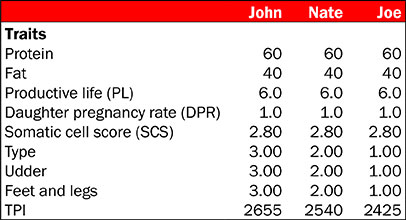
"It shouldn't take a tall cow to have a good udder or feet and legs. The correlation is still too high," explained Nate Zwald to those attending the 130th National Holstein Convention in St. Charles, Ill.
Before illustrating his point, Zwald acknowledged the tremendous progress the Holstein breed has made in conformation. But he then questioned the current emphasis placed on stature in the Total Performance Index (TPI).
"What has made the U.S. Holstein the world's gold standard?" rhetorically asked Zwald, who serves as general manager of Alta Genetics' U.S. division. "Since 1885, we selected for a profitable Holstein," said Zwald, who answered his own question. He discussed how U.S. and Canadian breeders selected for a single-purpose dairy cow after importing cattle from Europe, while European breeders continued to select for a dual-purpose, Holstein-Friesian cow.
Zwald then went on to revisit the stature question, reminding the audience that there is a 50 percent genetic correlation between stature and udders. That means bulls that sire taller daughters also tend to have higher udder composites. More concerning, however, is that, with a 50 percent correlation, it is very difficult for sires transmitting smaller cows to have high udder scores.
In making his case that the scale has been tipped too far toward stature, he compared three Holstein bulls - John, a fictional bull that is three points for type, feet and legs, and udders; Nate, two points for type, feet and legs, and udders; and Joe, a bull that was one point on all three scales. In this example, all the production and health traits were equal for John, Nate and Joe.
"Ranking these three bulls on the TPI list, John would rank fourth, Nate would rank 100, and Joe would be somewhere near a 1,000," reported Zwald. "Under current selection scenarios, only John would contribute to the next generation of genetic progress as a sire of sons . . . likely because John sired taller cattle due to the extreme correlation of stature to type, udders, and feet and legs," he said. "That would take place even though Nate sired more moderate stature and adequate type for today's commercial breeders."
Going back to John for a moment . . . why would he sire more sons? The fact that John's daughters are taller, push his ranking up for type, udders, feet and legs, thereby increasing his TPI substantially (by 115 points in this example), and placing him near the top of the list, said Zwald. "Being at the top of the list gets him more flushes to the elite females of the breed, thereby increasing the stature of the breed in subsequent generations. We think we are selecting for better UDC and FLC, but the unintended effect is that we are also making bigger cows.
"Don't get me wrong, the entire U.S. dairy industry is the absolute gold standard around the world. That includes the U.S. genetic evaluations. Holsteins and TPI Holsteins," stated Zwald. "What could cause other dairy cows to catch the U.S. Holstein? If we fail to focus on profitability. That doesn't include stature," concluded Zwald.
(c) Hoard's Dairyman Intel 2015
July 6, 2015








